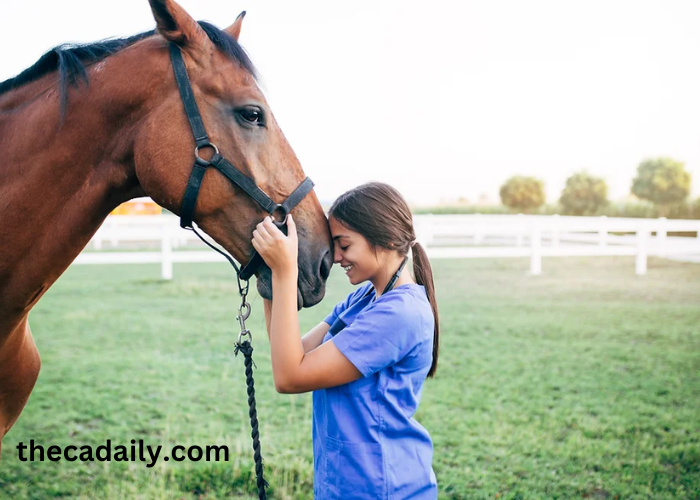Horses have been companions to humans for thousands of years, playing critical roles in agriculture, transportation, sports, and therapy. Despite their long history with humans, understanding equine behavior remains a complex and fascinating field. Gaining insights into how horses think, communicate, and interact with their environment not only enhances our bond with these majestic animals but also ensures their well-being and safety. Discover the finest quality turf products at AbdellatifTurf. From lush green grass to durable sod, we have everything you need for a beautiful lawn.
Social Structure and Communication
Horses are social animals that naturally live in herds, which provide them with safety and companionship. In the wild, a herd typically consists of a dominant stallion, several mares, and their offspring. This social structure influences many aspects of equine behavior.
Communication within a herd is primarily non-verbal. Horses use a combination of body language, facial expressions, and vocalizations to convey their intentions and emotions. Key behaviors to observe include:
- Ears: Horses’ ears are highly expressive. Forward-facing ears indicate curiosity or interest, while ears pinned back suggest aggression or discomfort.
- Tail: A relaxed tail usually means the horse is calm, while a swishing tail can indicate irritation or the presence of flies. A clamped tail may signal fear or submission.
- Body Posture: A horse standing squarely on all four legs is generally at ease. Pawing the ground, shifting weight, or pacing can be signs of anxiety or impatience.
- Vocalizations: Horses use sounds like nickers, whinnies, and snorts to communicate. A soft nicker often denotes affection or greeting, while a loud whinny might signal distress or a call to other herd members.
Learning and Memory
Horses possess remarkable learning and memory capabilities. They are adept at forming associations and can quickly learn from both positive and negative experiences. Training methods that employ positive reinforcement, such as treats or praise, are particularly effective in shaping desired behaviors.
Repetition and consistency are crucial in training horses. They thrive on routine and can become anxious when faced with sudden changes. Understanding a horse’s learning style and pace is essential for successful training, as rushing the process can lead to confusion and resistance.
Sensory Perception
Horses have highly developed senses that influence their behavior. Their large eyes provide a wide field of vision, allowing them to detect movement from great distances. However, their depth perception is limited, which is why sudden changes in terrain can startle them.
Horses’ sense of smell is also acute, aiding them in identifying other animals and humans. They often greet each other by sniffing, a behavior that helps them gather information about their surroundings.
Touch is another important sense for horses. They are sensitive to the slightest pressure, which is why gentle handling and precise cues are critical in training and riding.
Flight Response
One of the most notable aspects of equine behavior is the flight response. As prey animals, horses have evolved to flee from perceived threats. This instinct is deeply ingrained and can be triggered by sudden movements, unfamiliar objects, or loud noises.
Understanding the flight response is vital for ensuring the safety of both horses and handlers. Building trust through consistent, calm interactions helps horses feel more secure and less prone to panic. Gradual desensitization to potential stressors can also reduce their flightiness over time.
Emotional Intelligence
Horses are capable of experiencing a range of emotions, including joy, fear, anger, and affection. They can form strong bonds with other horses and humans, often displaying loyalty and affection towards their caretakers.
Recognizing and responding to a horse’s emotional state is crucial for effective management and training. For instance, a fearful horse requires patience and reassurance, while a bored horse might benefit from increased mental stimulation and varied activities.
Conclusion
Understanding equine behavior is a continuous journey that requires observation, patience, and empathy. By learning to interpret their signals and responding appropriately, we can create a harmonious and rewarding relationship with these magnificent creatures. Whether for work, sport, or companionship, the insights gained into the world of horses enrich our interactions and deepen our appreciation for their unique and complex nature.


